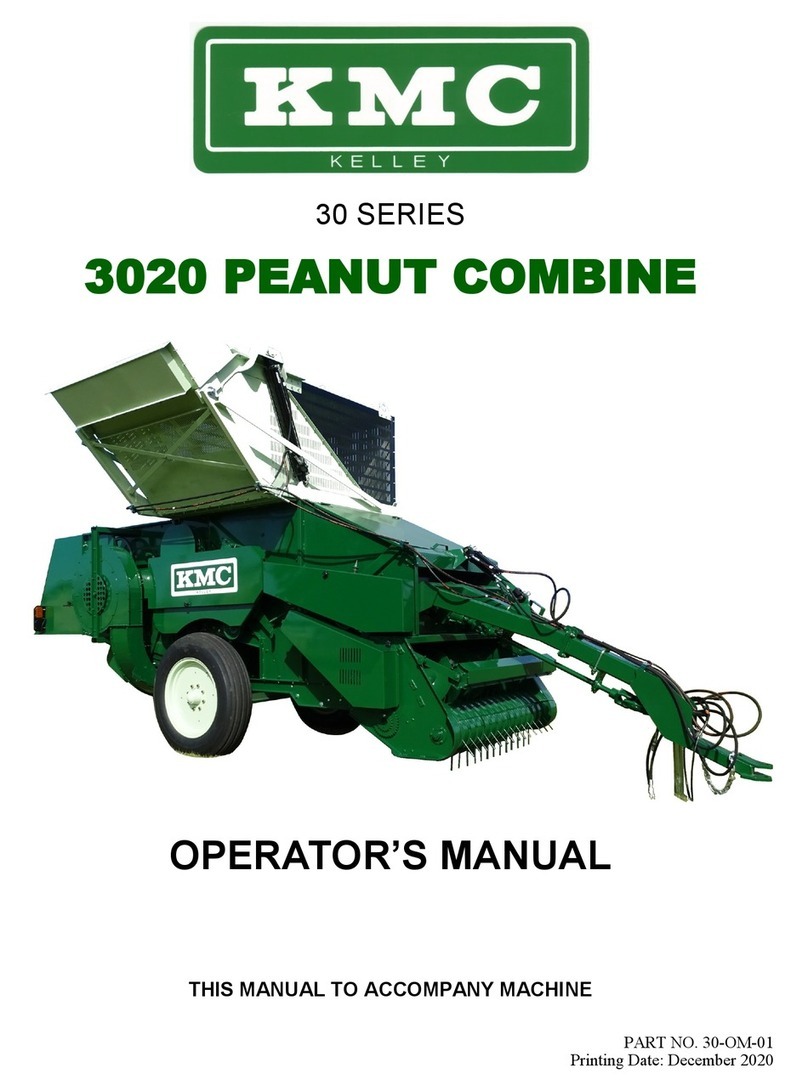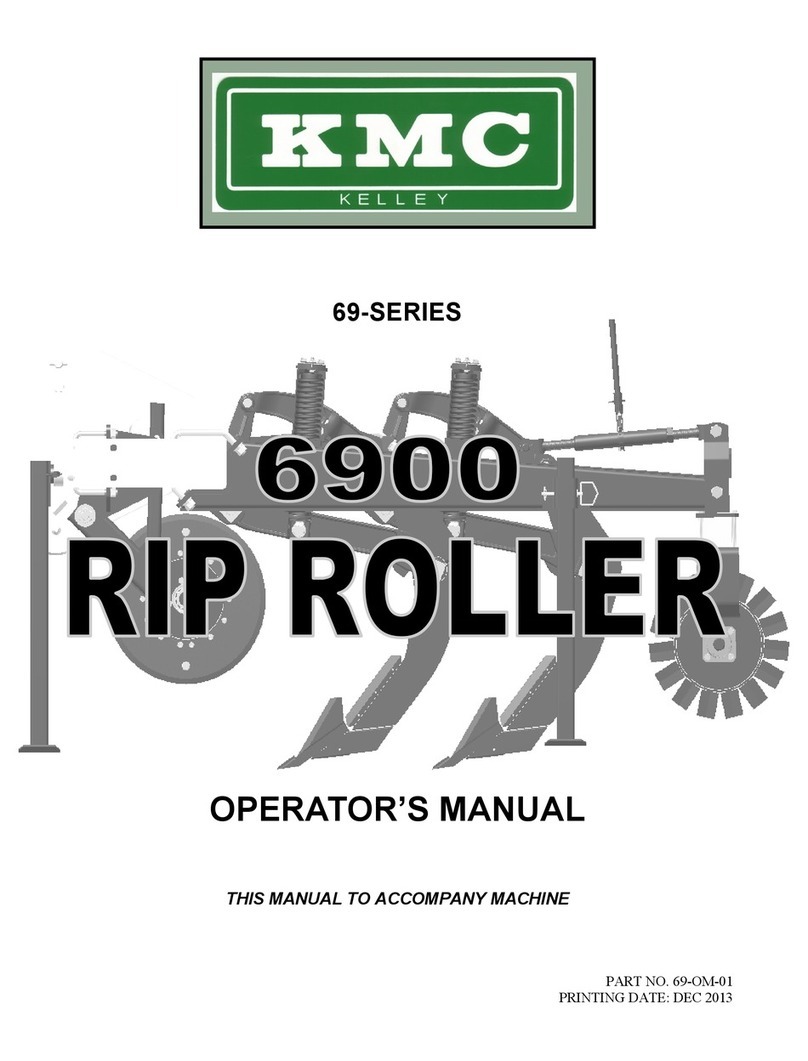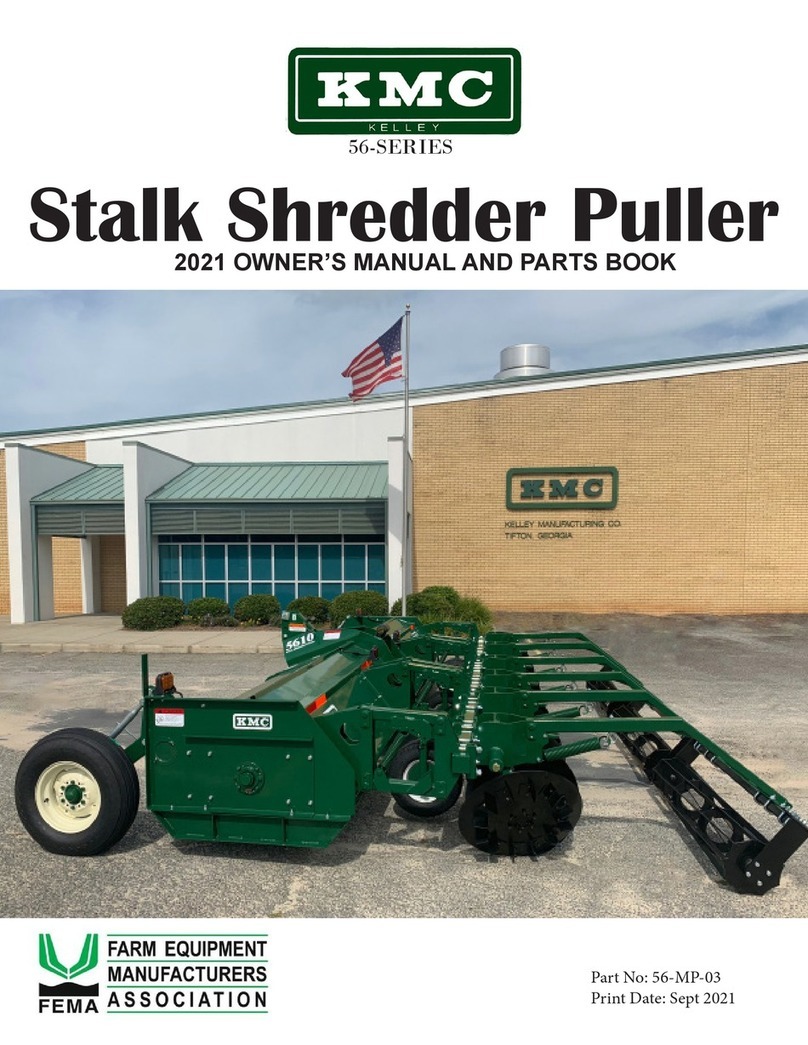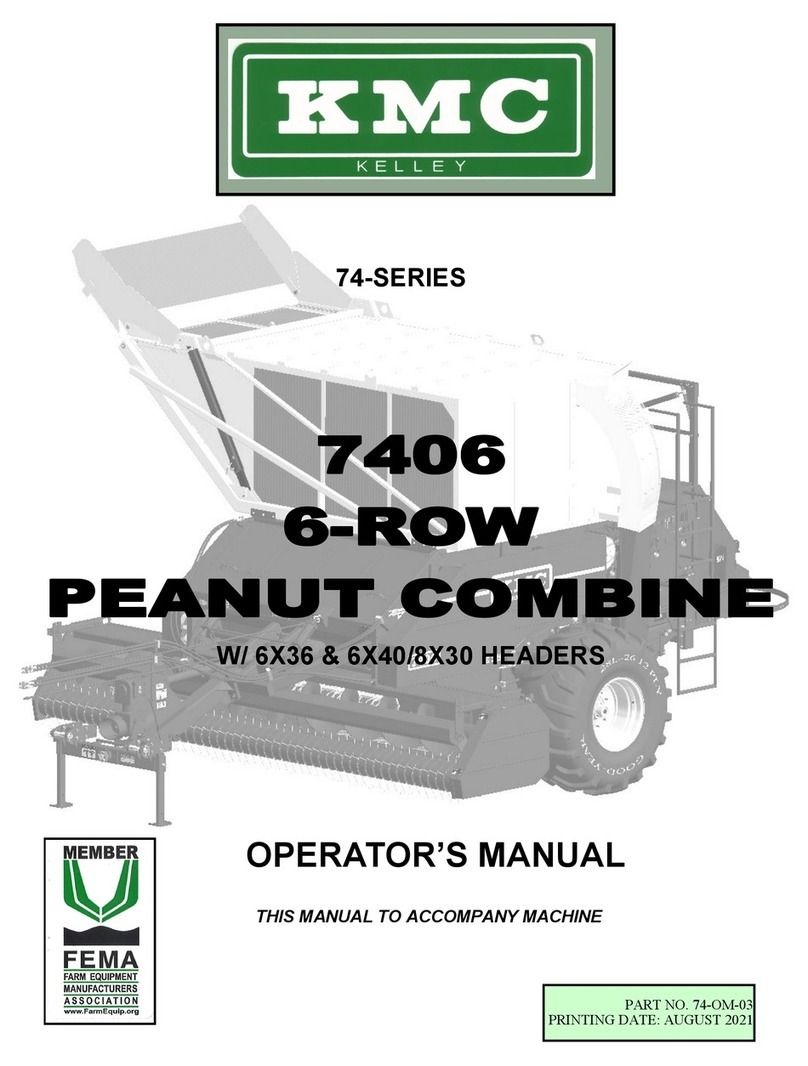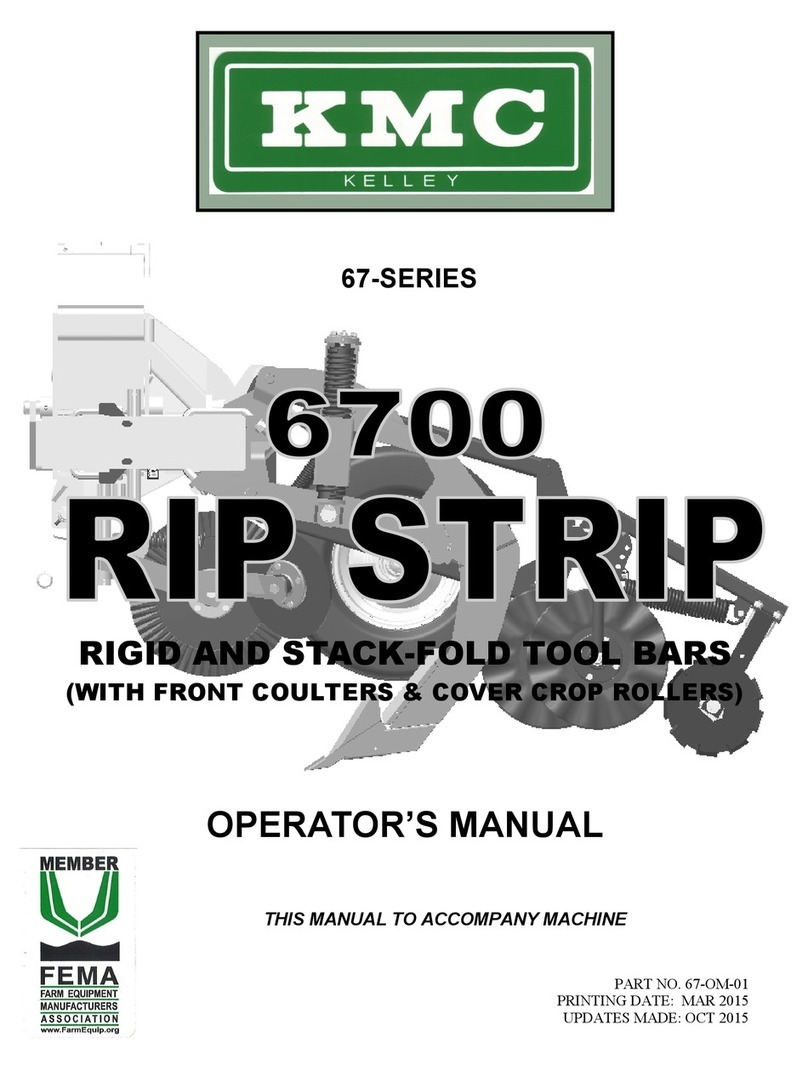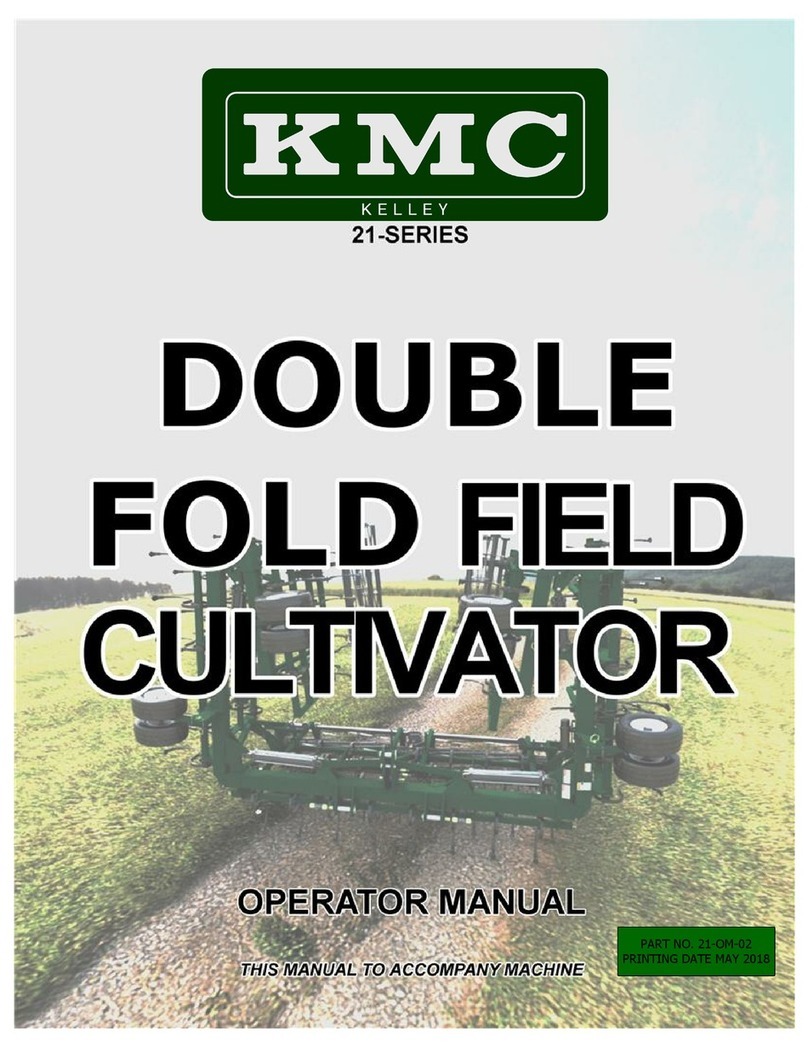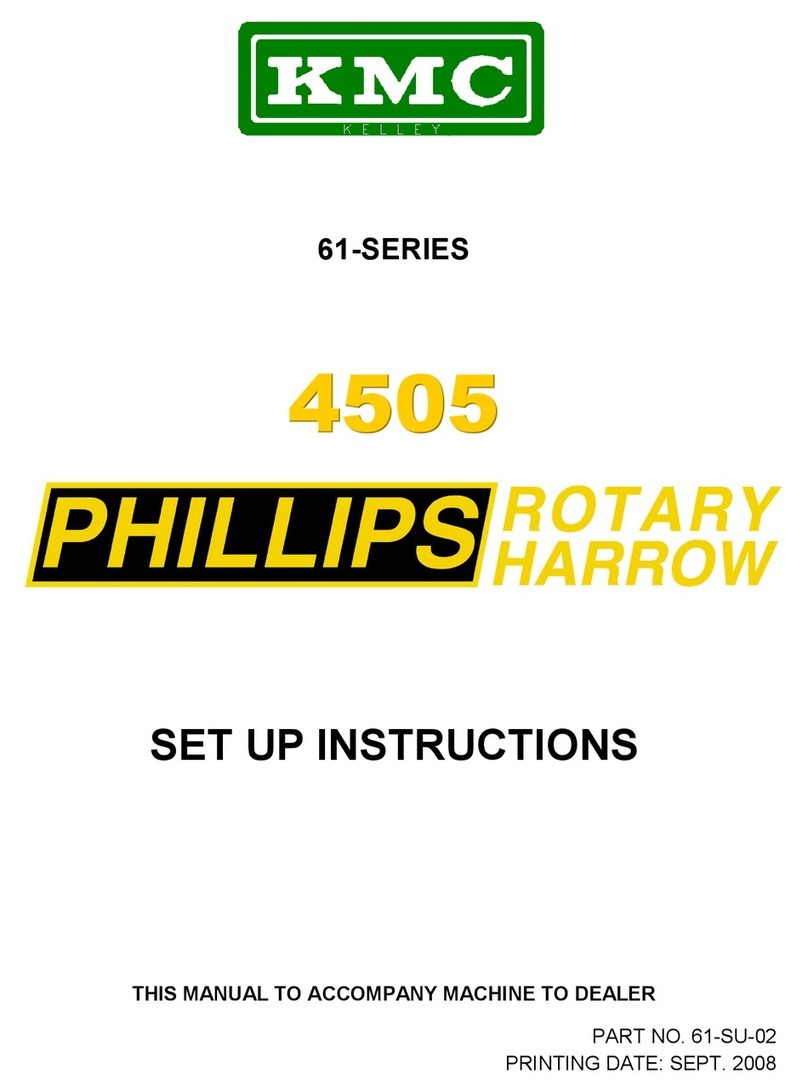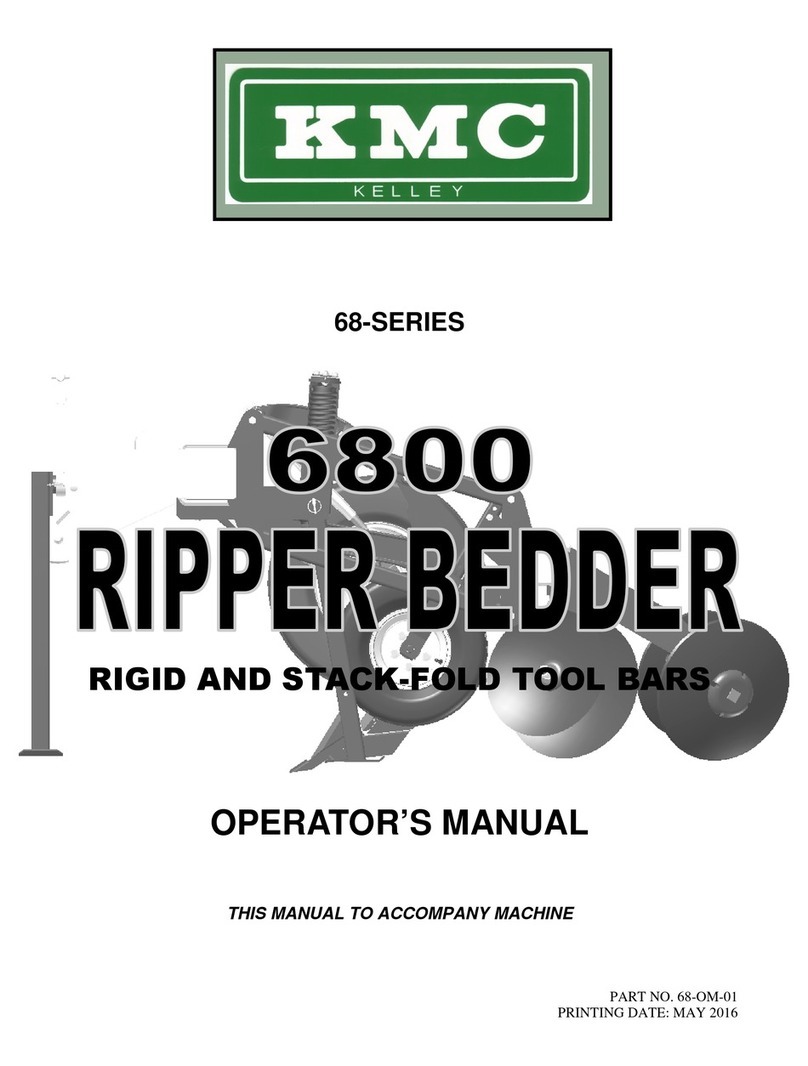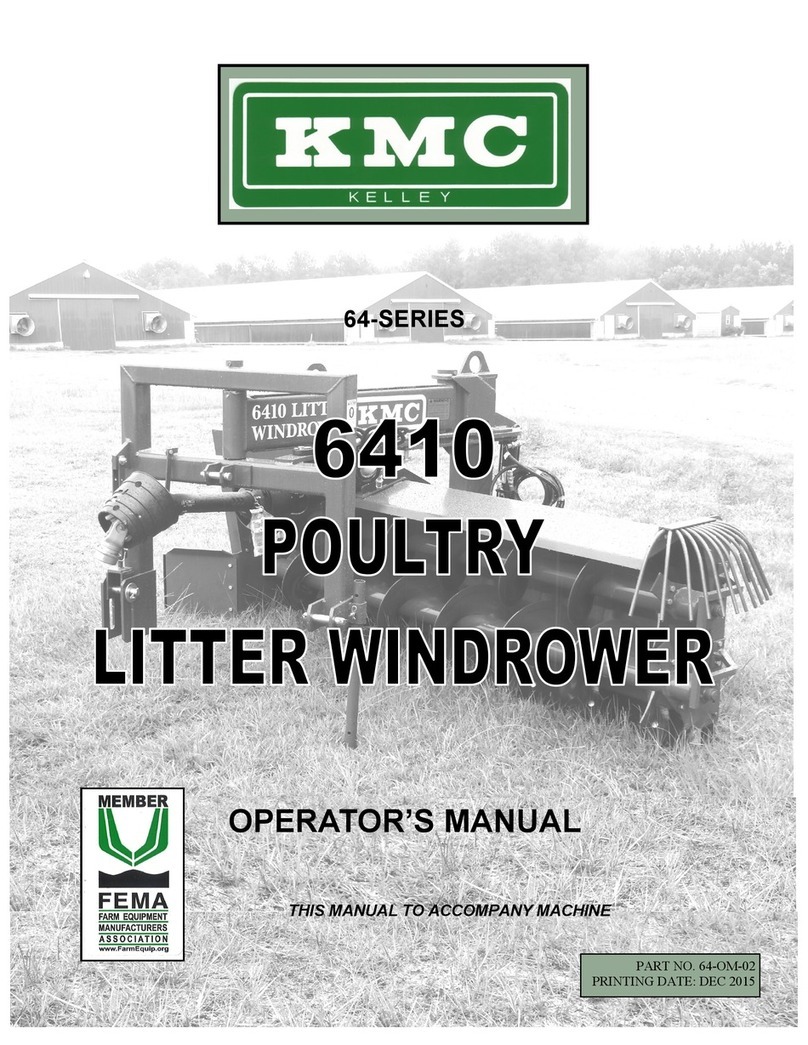
7
In operation the pickup height should be set with
the springs approximately one inch above ground.
This will minimize spring wear and nut losses from
lift height.
The pickup speed is variable and should be set to
match ground speed. Proper adjustment of the pickup
speed will reduce losses. If the pickup is running too
fast it will tend to pull the vines apart as they are
rising to the header and nuts will be pulled off the
vines. If the pickup is running too slow it will push
the vines along the ground before picking them up
which will also result in excess losses.
If the tractor has a multi-turn precision flow con-
trol, connect the motor hoses directly to the tractor. If
the tractor has no flow control or one with only a
1/4 turn adjustment, then KMC flow control kit #33
-081-229 is required to be able to set the header speed
accurately.
For proper header operation, the tractor hydraulic
system must be capable of supplying up to 15 gpm at
pressure near 3000 psi. If tractor hydraulic flow is
too low, then ground speed will be reduced. If tractor
hydraulic pressure is too low, then the header will
plug more easily.
The pickup speed should be adjusted to match
field conditions as they change. Peanuts should feed
smoothly from the pickup band to the number one
cylinder. This will give a uniform flow of material
for threshing and separating.
PICKUP AUGER ADJUSTMENT
AND OPERATION
The purpose of the auger is to transfer vines to
the center of the machine after they have been lifted
by the pickup reel. PROPER VINE FLOW IS
IMPORTANT AND ALLOWS THE PICKING
AND SEPARATION SYSTEMS TO PERFORM
EFFICIENTLY AND SAVE MORE PEANUTS.
Ideally, vines should flow to THE REAR of the auger
and then be transported to the throat of the machine.
If they tend to flow in front of the auger instead of
being fed underneath it, they will enter the center of
the throat, causing the middle of the picking and sepa-
ration systems to be overloaded, causing peanut loss.
The auger can be adjusted horizontally or
vertically as a means of creating proper vine flow.
These adjustments are located on the auger shaft
ends.
To raise or lower the auger, loosen the drive
chain and the two bolts on the sides of the frame
members as shown in Figure 9. Then screw the
adjustment bolt out to raise the auger or in to lower it.
To move auger forward or backward, loosen the four
bolts in the auger bearing mount plate. Re-tighten
chain and all bolts securely when either of the above
adjustments are made.
NOTE: In most cases, raising the auger will allow
vines to feed in the desired manner (underneath
the auger). If vines still do not feed appropriately
after auger is raised, it may be necessary to move
the auger forward.
NOTE: It is important that the auger be posi-
tioned low enough to keep the trough swept clean
and prevent dirt and trash from building up.
CAUTION: MOVING AUGER FOR-
WARD INCREASES THE POTEN-
TIAL FOR VINES TO WRAP OR RE-
CIRCULATE AROUND THE AUGER.
In small vines which feed well under the auger, it
may be necessary to move the auger to the rear and/or
lower it to prevent vines from wrapping or building in
the trough.
IT IS VERY IMPORTANT THAT VINES FEED
FROM THE BACK OF THE AUGER!
Figure 9

